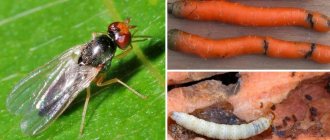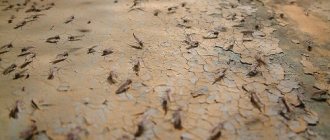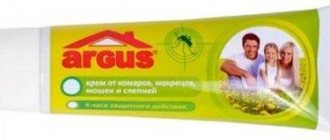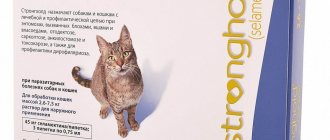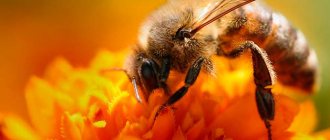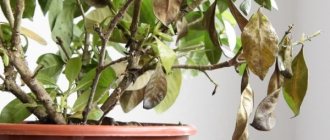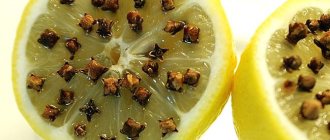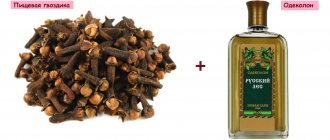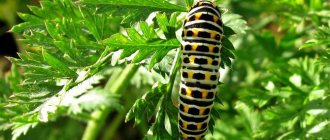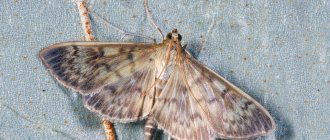Insect eating fruit tree shoots
- Fact:
This insect is a serious threat to fruit and berry plants. - Fact 2:
The summer color of the pest is bright and juicy - Fact 3:
The pest hatches from an egg towards the end of winter and begins to fly by the beginning of summer. In mid-June, the copperhead mates and lays eggs. - Fact 4:
Trees on which the sucking insect has settled turn yellow and lose their leaves. The buds in which the larvae lived will no longer bloom.
The psyllid, this small insect also has another name - the psyllid. And all because the products of its vital activity are released in the form of sticky balls that cover the shoots of trees in places favored by pests. The fruit parasite was dubbed the psyllid because of its ability to jump very high. This insect is a serious threat to fruit and berry plants. Among the huge number of varieties of copperheads (about 1300), the most common are apple and pear.
Appearance
There are about 300 species of this pest in Russia. It thrives in many zones (steppe, forest, forest-steppe), but the largest accumulation is observed in the north-west of the country.
The psyllid is a small insect, an adult no more than 3 mm. The summer color of the pest is bright and juicy:
- Emerald green.
- Rich redness.
- Carrot orange.
In winter, the colors fade, becoming brownish-brown, pale yellow, etc.
The limbs of the psyllid are similar to those of the flea, which is why it has the same jumping ability. The insect has transparent wings, which it folds over the body like a hut, and thin antennae, quite long.
General information
The carrot psyllid, like the apple psyllid, is a tiny midge. Its color is pale green. She cannot fly, in the full sense of the word, although she has wings. Thanks to them, the insect is able to jump considerable distances. So this little fly has no problems finding suitable food.
The length of the oblong body of the psyllid ranges from 1.7 to 3 mm. Females have a cylindrical ovipositor in the lower part of their abdomen, while males have mites. The insect's body is divided into segments, and the head is noticeably distant from the body. It has eyes and long conical antennae.
The apple or carrot psyllid has three pairs of legs and two pairs of wings. Under a magnifying glass, you can see spines on the hind legs of the insect. With their help, the insect manages to jump further. As the name suggests, this psyllid feeds on carrots, while a closely related species feeds on apple trees.
Carrot psyllid eggs look like an elongated ellipse. Interestingly, they are initially white in color, but after a few days they turn yellow. The lower part of the egg is noticeably narrowed, and on the upper there is a thin thread-like process. There is a tiny stalk located in the center of the egg. Agree, this insect has a very interesting egg shape.
The larvae are also unusual. They don't have legs as such. The shape of the body is incorrect. It is divided into two rounded segments, and in the middle it is much wider. The top of the larva is convex and the bottom is pointed. These little ones hardly move, but feed on plant sap with great appetite.
The carrot psyllid is very similar to the garden psyllid, oak psyllid, pear psyllid, and laurel psyllid. The differences are that it is much smaller than its relatives and has a light green body color rather than brown. See photos of psyllid insects.
Biological cycle
The pest hatches from the egg towards the end of winter and begins to fly by the beginning of summer. In mid-June, the copperhead mates and lays eggs. If the adult has overwintered, it flies much earlier than the young one that has hatched from the egg, already in early March. And she lays eggs as soon as the air warms up to +10C. The clutch ranges from 20 to 90 eggs. And although the female psyllid lives only for a month, during this period she manages to lay a total of 1,200 eggs in the summer and 600 in the spring.
The color of the masonry is whitish, becoming light orange when ripe. The spring copperhead attaches the clutch next to the swelling buds, and the summer one - on the back side of young leaves. If a leaf or branch of a tree dies, the psyllid's offspring die along with it.
From the moment the larva appears until its transformation into a winged insect, a five-phase period of development occurs. First, the larvae settle in the buds, moving to the branches as they grow. The process of full ripening lasts 15-60 days, depending on the type and conditions.
After being released from the egg shell, the psyllid larva spends some time on the branch, breaking through the bark and sucking out the juice. Then she climbs into the bud and begins to gnaw on the tender young greens. When the leaves peck from the buds, the pest clings to the cutting or stalk.
The copperhead attacks specific fruit and berry trees:
- Apple tree.
- Pear.
- Cherry plum.
- Plum.
- Hawthorn, etc.
The choice of tree depends on the type of insect. Other, less common species prefer:
- Iwu.
- Poplar.
- Maple.
- Ash.
- Birch and other leafy trees.
Lifestyle and harmfulness
The apple honeydew is a monophage. It only damages the apple tree.
Damage to the apple tree is caused by nymphs, which attach themselves to young leaves and flowers even before the buds open. Damaged buds dry out and fall off, and the leaves develop much more slowly and can be 8...10 times smaller than healthy ones (there is, however, evidence that the area decreases by 15...52% - see the lectures of the State Agrarian University, edited by Slepchenko). If the leaves are severely damaged, the tree does not have enough nutrients to form a normal harvest: it discards a significant part of the ovary and forms fewer fruit buds the next year. According to some reports, the vital activity of the apple honeydew can lead to the loss of 15% of flowers and leaf rosettes.
Insects not only suck out the juice, but also excrete large amounts of sticky, sugary excrement. The latter have the appearance of whitish balls covered with a thin shell of a wax-like substance. Wax is secreted by special perianal glands. These balls blur and form a sticky mass that glues the leaves and parts of the bud inside the buds, floods the stomata and impairs aspiration and respiration. In addition, apple psyllid excrement serves as a substrate for the development of sooty fungi, which also impair the functioning of the leaf.
Signs of pest damage
Trees on which the sucking insect has settled turn yellow and lose their leaves. The buds in which the larvae lived will no longer bloom. The sticky secretions with which the pest covers the plant breed pathogenic fungi. The tree loses its immunity and does not bear fruit. It dries out in the summer and freezes in the winter.
Even if a flower affected by copperhead survives and is pollinated, its fruit will still be inedible, the shape is irregular, and the flesh is hard and tasteless.
Attention! The first sign of psyllid infestation is a sticky coating on the plant. It shines in the sun's rays and spreads throughout the tree (buds, leaves, branches).
Development
Imago. Postembryonic development of the first generation and egg laying coincide with the second half of the apple tree's flowering period. The average lifespan of a female is 11.9–21.6 days, the maximum is 39 days. Females laying winter eggs appear in July–August.
Mating period. The female lays eggs on the bark of shoots, in the forks of branches or at the base of fruitlets within 2–4 days after hatching. 1–2, less often 3–4 eggs are laid per day. The total fertility is 60–90 pieces, the maximum is 150.
The laying of winter eggs lasts 2–3 months and ends only in late autumn when the temperature drops to 8–9°C. In large numbers, winter eggs are arranged in two or three layers, and the bark acquires a pink tint.
Egg. At a temperature of +15°C, the embryo develops in 15 days, at +21°C – 5 days. Eggs laid in autumn overwinter.
The red apple mite overwinters in the egg stage (bright red or orange), which are found in cracks in the bark, on the forks of branches, at the base of annual growths, in the recesses of twigs and branches. The larvae appear with the first warm weather (usually in April-May), as soon as the buds begin to bloom on the fruit trees (usually coinciding with the separation of buds in the Antonovka variety apple tree) and ends immediately with flowering.
Larva. The spring hatching of larvae is observed simultaneously with the pinking of apple tree buds at a sum of effective temperatures of 50-55° (above +8°C). Mass hatching occurs at a sum of effective temperatures of 67–72°.
Having hatched, the insects move along the branches and trunk to young leaves and begin feeding. At a temperature of +15°C, the larva develops within 2.8 days, and at +21°C – 2.5 days.
The larvae are red in color and have three pairs of legs. As they mature, they lighten and become yellowish-brown. At first they feed on the juice of buds and flower buds, and then completely switch to leaves (living and feeding on their undersides). With age, the matured and strengthened tick larvae no longer disdain either the fruits of the tree or its juicy young shoots.
Nymph. It goes through two stages of development: protonymphs and deutonymphs. At a temperature of +15°C, the protonymph develops in 3 days, the deutonymph - 5. At a temperature of +2°C, development occurs in 2.6 and 1.8 days, respectively.
Imago. The first generation appears in the second half of the apple tree's flowering period. Females laying winter eggs appear in July–August.
Already at the end of May, adult females of the first generation appear and are capable of reproducing offspring.
In one season, a female apple mite produces approximately four to five, and under favorable conditions, up to eight generations of pests, laying approximately forty to ninety eggs. Moreover, the female apple mite, unlike its counterparts, does not form a web. Her eggs are spherical in shape and a rich, bright red color.
First, the pest colonizes the inner part of the tree crown, and then, as the food supply is destroyed, it rises higher and higher up the trunk.
If there are many clutches on a tree, they are arranged in two or even three layers, so the plant may appear red or pinkish from a distance.
Features of development.
During the season, the red fruit mite produces 3–4 generations in the northern regions of its range (Leningrad region), 5–6 generations in Ukraine, and 7–9 generations in Bulgaria. The full development cycle is completed at a sum of effective temperatures of 210°, the lower threshold is +8°C. The mobile stages of the pest enter diapause when daylight hours range from 14 hours in the south to 17 hours in the north. The transition to diapause is caused by a deterioration in nutritional conditions, a decrease in temperature and a gradual reduction in the duration of daylight hours at the end of the growing season. Frosts lead to the death of all mobile stages.
Apple
Affects apple trees. Sticky balls in a wax shell seal flower stomata, buds, and buds. As a result, they dry out and fall off. An adult grows up to 2.5 mm. It has a yellowish-green body and transparent wings with red streaks.
One generation is hatched every year. The female lays eggs in the first two months of autumn, after which she dies. From the eggs, after wintering on the bark, larvae emerge during the period when the apple tree opens its buds. The larva instantly attaches to the petioles, climbing inside. After 30-40 days, the insect reaches sexual maturity, flies and flies to other apple trees around. With the arrival of autumn, the cycle begins again. During the season, the female lays no more than 180 eggs.
How to detect apple blossom beetle on your property
During the period of swelling of the buds, it is necessary to carefully examine the trees. If transparent shiny droplets are noticeable on them, it means that the apple flower beetle has woken up after hibernation and began to feed before the mating flight. This phenomenon is also called “crying kidneys.”
Crying buds are the first sign of the apple blossom beetle appearing in the garden; ipimages.org
The pest does not cause much harm to plants during this period, except in cases of mass invasion. The more buds covered in droplets, the greater the potential for future crop losses. When the temperature drops below 5-7°C, the beetles fall into torpor and sit near the kidneys, waiting for warmth. At this point they are easy to spot. Early in the morning, spread film or burlap under the tree, shake the tree or walk along the crown with a pole - and the pests will simply fall off. All you have to do is collect the frozen insects and destroy them. We recommend carrying out at least 3 such procedures, if weather conditions permit. At higher temperatures, the beetles will simply fly to other trees.
If the air temperature drops below 0°C, the apple flower beetle may go back to its winter refuge before the weather warms up and shaking the tree will not allow it to be detected.
The second sign of the presence of the apple blossom beetle in the garden is more dangerous - the presence of shriveled buds on the trees, inside of which larvae are hiding (they can be detected by simply opening the affected bud). Of course, in such a situation it will not be easy to save the crop; we can only hope that the number of insects is not too significant. But you shouldn’t give up either. Pick off all dry buds and burn them, this will prevent new insects from appearing. All efforts will need to be devoted to reducing the number of pests in order to protect future harvests. We will tell you more about this below.
An invasion of the apple blossom beetle can lead to the death of the entire crop. But during the years of abundant flowering of the apple tree, a small number of “elephants”, on the contrary, helps to reduce the excess number of ovaries, which has a good effect on the quality of the fruit.
Pear
The most common pest among other types of psyllids. The insect that appears in summer is reddish-orange, in winter it is brown and dark. When the air warms up to +3C, the insect wakes up and begins to eat intensively; at +10C it lays eggs. One generation has up to 1200 pieces!
In the southern territories, the female produces 5 generations per year, in the northern territories - 3-4. The drier and hotter the climate, the more fertile the female and the faster the maturation of the egg.
Fighting methods
You can fight carrot psyllid using agrotechnical, folk or chemical methods. Each of them is appropriate at different stages of insect development.
Agrotechnical measures
Perhaps the most reliable and easiest way to avoid the invasion of these insects is to refuse to plant carrots near coniferous trees and forests. This is where psyllids overwinter. Regular weeding of the area is also a good protection.
Traditional methods
Among the effective folk (homemade) remedies for protecting carrots from the voracious psyllid, summer residents with experience highlight tobacco infusion. It successfully repels the pest. They need to spray the carrots immediately after the sprouts appear.
The infusion is prepared and used as follows:
- tobacco waste or shag is taken in a ratio of 1:10 with hot water;
- a day after infusion in a dark place at room temperature, this folk remedy must be strained and squeezed out;
- Before spraying, add 30 ml of liquid soap to the solution. This will give the solution stickiness;
- Spraying with tobacco infusion can be done every three weeks until the start of harvest.
Photos
Description
The pear psyllid or honey psyllid, as it is also called, is a small, winged insect with well-developed wings. It quickly jumps from one plant to another. The pest multiplies very quickly. The bodies of adult insects in the imago state are colored red-orange in summer. In winter their color changes to black. There are light stripes running along the chest in the longitudinal direction. The insect has transparent wings covered with dark veins. In a calm state, the copperhead folds them along the body. The size of adult insects reaches 3 mm.
The head of the copperhead is triangular with 2 large and 3 small eyes. The mouthparts of the psyllid are of the sucking type and are equipped with a proboscis. With its help, the insect sucks the juice from the leaves of the fruit tree. You can take a closer look at the insect in the photo below.
Ways to combat psyllid
The “war” must begin in early spring, before the buds open. Fruit trees are sprayed with infusions from improvised means:
- Soap.
- Ash.
- Tobacco.
- Yarrow.
To destroy already laid eggs, use a 3% solution of nitrafen.
If the larvae have already emerged from the egg shell, then during the opening of the buds the trees are treated with a 2% solution of “Preparation No.-30”. Or chemicals to kill aphids.
Sexually mature individuals that have already acquired the ability to fly can be rendered harmless by fumigation using tobacco smoke:
- Lay out piles of dry grass.
- Sprinkle tobacco and shag on top.
- Burn and, in a state of smoldering, fumigate the garden for 2-3 hours.
The frozen pests will fall to the ground. To prevent them from coming to their senses and again filling the branches, the soil under the trees is dug up.
The methods described are effective enough to rid your orchard of insect pests and prevent the crop from dying.
How to deal with Medyanitsa?
The fight against the copperhead is a multi-stage and quite complex process. But, if you find out where the larvae overwinter, how they then feed and reproduce, then all the necessary measures can be carried out correctly and on time. The best time to destroy larval colonies is during bud break and before flowering. You can use an infusion of tobacco smoke to spray the plant. In more severe cases of infection, measures to combat the pear worm or other type of parasite include spraying with chemicals.
When using strong chemical or biological preparations, you can spray the plant only until the buds open. It is important to take all precautions.
Medyanitsa - general information about the pest
The copperhead or common pear psyllid is a widespread pest, which is classified as a monophage. It is found almost everywhere where pears can grow - in central Russia, Ukraine, Belarus. It is often found on trees in the Leningrad region. It is rare in Karelia, but it does happen. The main signs of the presence of copperhead on a tree:
- sticking and falling of leaves;
- damage to the general appearance of fruits;
- increased pulp density;
- insipid taste of fruits;
- development of sooty fungus.
The larvae of the pear psyllid secrete a sticky substance – copper dew – as they feed. Fungal compounds actively develop on this substance, which lead to the appearance of black plaque on fruits, foliage and tree branches. If you get too close to the affected pear without a hat, there is a high chance that your hair will stick together from copper dew.
On a note! Monophages are creatures that tend to eat only one food. In the case of the copperhead, it could be an apple or pear tree. Each highlighted case has its own coverage. Among mammals, only koalas are classified as monophagous; they eat exclusively eucalyptus leaves.
Description
The psyllid that infects pear trees comes in two types: yellow and spotted. The second variety of this pest poses the greatest danger and harm. The adult individual in appearance resembles a small midge with wings. The color varies from orange to dark brown, depending on the season. Stripes or spots are often found on the thoracic region of the insect. The size rarely exceeds 2.5-3 mm, making small populations and the onset of lesions difficult to detect.
The imago is a fully developed form of the copperhead. Upon reaching maturity, females lay gray-white eggs on the leaves of the plant and at the base of the buds. As they ripen, they change color to orange. Larvae (nymphs), which are born within 6-20 days, go through up to 5 stages of development before the formation of a full-fledged insect. Males of the common pear honeydew die immediately after mating.
Lifestyle
Overwintered pests begin to actively mate with the onset of warmth and a rise in temperature to +5ºC...+10ºC. The total number of eggs laid in one clutch at the beginning of the season can reach 400 pieces. One female can perform up to 4-5 such generations. If the temperature has already reached 20-22ºC, then the clutch size can reach 1000-1200 eggs. The main places where oviposition can be located:
- kidney bases;
- leaf plates;
- pedicels.
After birth, honeydew nymphs begin to feed on tree sap. At the initial stage, the main area of their distribution is in the buds of the tree. Later they move onto the leaves and then damage the young shoots of the pear. When the nymphs reach a developed state, the whole process begins again. Insects that have not reached maturity before the onset of cold weather die.
On a note!
The spread of the insect to other plants is associated with the ability of the psyllid to fly - the wings of the psyllid are sufficiently developed to move between distant areas.
Development cycle
The spotted copperhead spends winter hibernation on a pear tree, while the red honeydew usually waits out the cold on other plants and appears near the pear tree only in spring. The activity of females of this pest begins with spring warming in April-March. The main place for placing clutches at the beginning is the woody shoots of the fruit. Later, oviposition can be found on buds and leaves. Each psyllid egg is no larger than 0.3 mm in size, and at the base there is a stalk, due to which it is attached to the surface. Stages of development and rebirth of the nymphs of the copperhead:
- The insect larva, which has just been born, does not exceed 0.36-0.54 mm in size. The color of the body is orange with possible brown spots on the back. The antennae on the head of the insect are three-segmented with a single rhinarium.
- By the second stage of development of the psyllid nymph, the body gradually becomes lighter. The length of the insect does not exceed 0.55-0.72 mm. There are no changes in other characteristics.
- At the third stage of formation, the psyllid larva changes its color to grayish-yellow. Body dimensions increase to 0.75-1 mm. A second rhinarium is formed on the outermost antennal segment.
- The fourth stage of development is characterized by body sizes from 1.1 mm to 1.35 mm. The color of the insect also undergoes changes - greenish-yellow. The antennae grow to five-segmented with 1 rhinarius on 3 and 2 rhinarii on 5.
- When honeydew nymphs reach stage 5 of development, their body length can reach 1.56-1.9 mm. The color becomes greenish-brown. The structure of the antennae is seven-segmented with 2 rhinarii on the 7th segment and 1 rhinarius on the 5th and 3rd segments.
Wing cases begin to develop only in the last two stages of the restructuring of the nymph's body. During the summer, before the onset of wintering, the copperhead has time to change up to 4-5 generations. If the initial spring number of individuals on a pear tree is not significant, then early treatment with chemicals is not recommended - it is better to wait until June. Otherwise, it is advised to begin the fight even before the first signs of kidney development appear.
Attention!
According to the timing of the development of the first oviposition, the appearance of the first nymphs of the pear honeydew coincides with the activity of the buds and the formation of the ovaries.
The harmfulness of the copperhead
The main danger of the appearance of this parasite on a pear tree is associated not only with the development of nymphs - the adult insect also feeds on sap. Psyllid larvae mainly parasitize leaf blades and young shoots. But the greatest harm is caused when the clutches are mainly distributed in the kidney area. The first nymphs, after spring warming, develop into full-fledged insects, just in time for the massive flowering of trees. Due to damage to the surface layer of bark on the shoots, the presence of waste from parasites and a reduction in juices in the leaves, the following changes are observed:
- buds and leaves fall off;
- the formed ovaries are small and dried;
- the appearance of sticky plaque and sooty fungus.
As a result, a general disturbance of photosynthesis occurs and the general immunity of the plant weakens. When a pear is damaged by the copperhead, there is a risk of attack by third-party pests and the active development of various fungal and bacterial diseases. Often trees with psyllids dry out. In one season, a pear affected by copperhead loses at least half of its crown. If you do not take up the destruction of parasites, then the minimum harm that can occur is the lack of harvest for the coming seasons.
